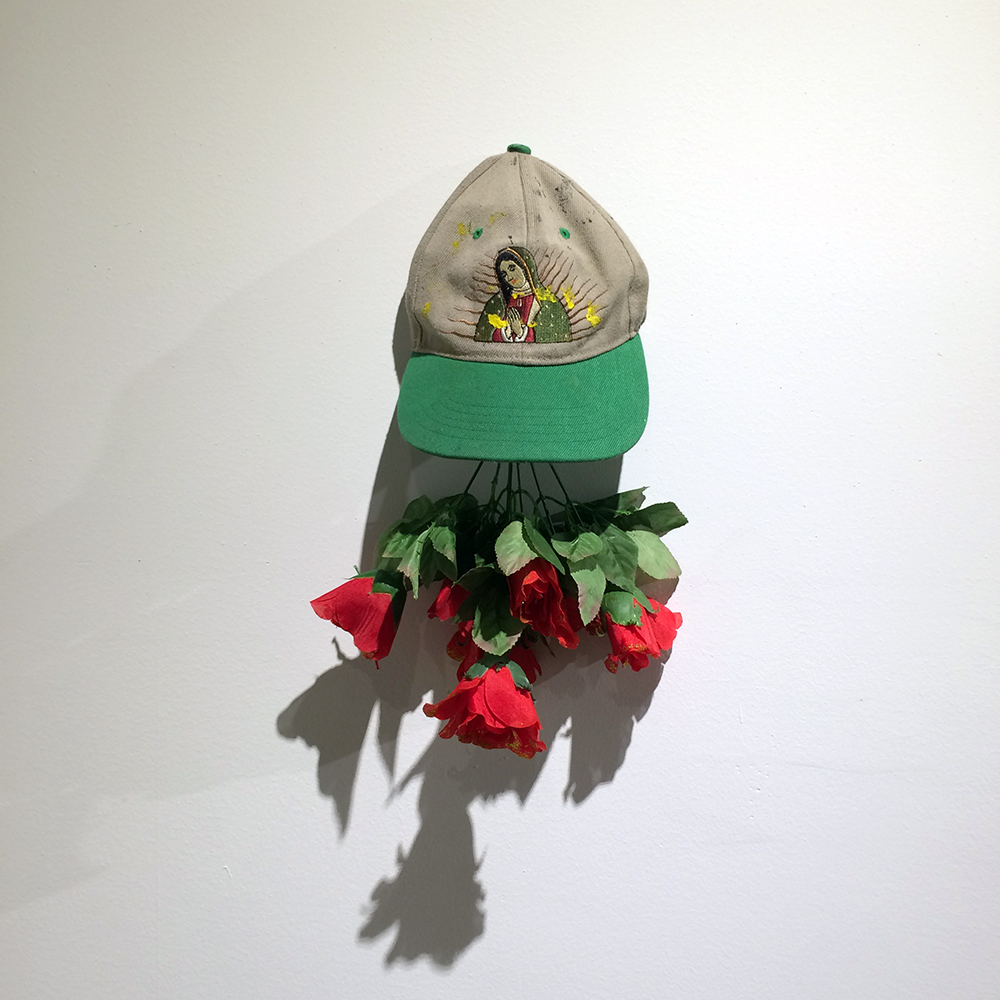










Americanismo Dreamers: All Paradox is Brown
Spray paint, acrylic and oil paint on canvas
12 x 5 feet
mixed media installation
dimensions variable
2015
The central panel of this non-narrative starts with icons: religious, secular and imagined symbols of transculturation in the American context. From 1600 century Viceroyalty paintings of santos and angelitos that mixed the ideas of the conquerors with the faith of the conquered to create this representation of Selena as a contemporary deity for her and future generations. Hovering above is a construction of a symbol of exclusion, the immigrant crossing sign, over the ever changing moon that connects us all and a fertility rabbit, an idea sourced from a Diego Rivera story of his childhood in Mexico that references the border landscape that connects the entire tryptic.
Born from the 1800 century Latin American independence, with Simon Bolivar and Jose de San Martin as its ideological fathers, Americanismo or PanAmericanismo is a movement that seeks to create, encourage and organize relationships, associations and cooperation between the states of the Americas, through diplomatic, political, economic, and social means. This broad humanistic idea of equality and unity is exemplified by the struggle of the contemporary Dreamers: immigrants who came to the USA as kids and who have been educated and acculturated to identify themselves as members of this country but whose experience and existence is regarded as illegal and consequently invisible- this panel is here for you to picture and imagine that amnesia.
The last panel of this tryptic is centered by Dorothea Lange's "Migrant Mother" which is an iconic Americana portrait of Florence Owens Thompson taken in 1936 at the height of depression in the dust bowl - the image of the Choctaw descendent is superimposed over the depiction of a contemporary great migration as a result of economic and social drought: that of a Central American migrant mothers and children. These two quotations hover over an image of the USA/Mexico border fence and a symbol of unity, the Wiphala or Andean People's flag which is a unifier across borders in South America. The double chains are a straight reference to 2chainz and the work of @nanookoso and they serve as symbols of wealth and capitalism that also unites us all under the pressure of upward mobility or the supposed existence of this idea in the American Imaginary